
03/21/2016 03:27 PM
Fury and the AfD
Inside the Revolt against Angela Merkel

For years, Germany appeared to be immune from the European phenomenon of right-wing populism, but this belief died on March 13 with the success of the Alternative for Germany party in three state elections. More and more people in Germany are frustrated with leaders "at the top" and are keen to stand up to them. Much of the anger is directed at a single person: Angela Merkel. Here, protestors hold up a banner opposing the chancellor in the eastern city of Erfurt.

Frauke Petry, chairwoman of the right-wing populist Alternative for Germany (AfD) party has been everywhere in the German media since her party did well in a trio of March 13 state elections. With anger against Chancellor Angela Merkel widespread, her party clearly benefited from its anti-immigration position.

Merkel has spent most of her time in the Chancellery steering her Christian Democratic Union (CDU) party toward the middle, taking over positions espoused by the center-left Social Democrats and even the Greens. That, though, has left her vulnerable on the right -- a situation the AfD has taken advantage of.

Even as most in Germany support Merkel's course in the refugee crisis, a significant and vocal minority does not. While the far right has sought to benefit from the anger, many of those who support the AfD are disaffected voters who previously supported the CDU and even the SPD and Greens.

While the CDU did poorly in two of the three state elections on March 13 -- here, wine bottles with CDU lead candidate Juliy Klöckner in Rhineland-Palatinate -- candidates that support Merkel's refugee policies won in all three states.
Why do people vote for Alternative for Germany (AfD), the right-wing, anti-immigration party that has stormed onto the German political stage? It's an appropriate question for Harald Schäfer, the operator of a hotel in Mannheim who grew up in a Catholic family and studied economics. Schäfer is the kind of person one refers to as upright; he used to count among his city's dignitaries. From the moment he could vote, Schäfer always cast his ballot for the Christian Democratic Union (CDU), which in recent years meant that he was a supporter of Chancellor Angela Merkel.
But a week ago Sunday, in the state parliament election in his home state of Baden-Württemberg -- one of a trio of important state votes that took place last weekend -- Schäfer did not choose the CDU. Rather, he opted for the people who shout "Merkel must go!" and "our leaders are lying to us!" on the market squares. He chose the party whose leaders have spoken of the need to shoot at refugees to stop them from crossing the border into Germany. He opted for those who reflect on whether Africans have genetically pre-programmed reproductive behaviors that are different from ours; for those who have suggested that the chancellor flee to Chile before public anger drives her out of the Chancellery.
Schäfer doesn't want refugees to be shot at. Indeed, he disagrees with most of what the AfD espouses. Helping others is important to him, he says, and he goes to church every Sunday. He has even sent out a chain mail calling for solidarity with the people in Syria.
So what happened?
"It's not witchcraft," Schäfer says. "I realized that the CDU has increasingly moved toward the leftist mainstream." He then lists all of the things that the CDU has done wrong in recent years: abandoning nuclear power, introducing a minimum wage, same-sex marriage. With each reform, Schäfer drifted a little further from his chancellor -- until the already delicate thread broke completely when the refugee crisis began.
Schäfer and the 1.3 million voters who cast their ballots for AfD sent a shockwave through the country last Sunday. Starting almost from scratch, AfD landed multiple delegates in three state parliaments, including two western German states. The party won 13 percent in Rhineland-Palatinate, 15 percent in Baden-Württemberg and fully 24 percent in Saxony-Anhalt. Fifteen AfD candidates were elected directly in Saxony-Anhalt and two others in Baden-Württemberg. No new party in Germany has ever been as successful so soon after its founding -- not even the Greens, which provided the first significant jolt to Germany's political party system in the 1980s. The Alternative for Germany is suddenly a force to be reckoned with. The party has thrown open the door to a new political era in the country.
A Revolt against Merkel
There are many explanations for AfD's success. But at its core, the rise of the AfD is the story of strife and of growing alienation between the chancellor and a portion of the German electorate. The triumph of the AfD is nothing less than a revolt against Angela Merkel.
It is a rebellion targeting a CDU leader who has continually led her party to the left, stripping many conservatives of a political home. It also targets a chancellor whose open borders policy in the refugee crisis may be attractive to left-leaning Germans, but is one which strikes more conservative voters as high-handed. Hotelier Schäfer, for his part, thinks it is naive to believe that so many Muslim refugees can be integrated into German society. "We are endangering our freedom when we take in too many people who don't want this freedom," he says.
Above all, however, the revolt is aimed at the chancellor as a symbol of the country's elite -- an elite which has supposedly lost sight of the people and their concerns. For many in Germany, Merkel has become the personification of a "ruling class" -- a class that not only includes the CDU, the center-left Social Democrats and the Greens, but also business leaders, union leaders and the media. The "powers-that-be" now includes anyone who has greater abilities, greater wealth or a louder voice than one's self.
The fight against the elites is the core of the AfD message, an approach that relies more on emotion than on a particular view of the world. In a poll conducted by TNS Forschung on behalf of SPIEGEL, 88 percent of AfD supporters agreed with the following statement: "The political powers-that-be do what they want, regardless. My opinion doesn't count." Among supporters of other parties, agreement with the statement was far lower.
As the head of a so-called "Grand Coalition," which pairs Merkel's conservatives with the center-left Social Democrats, and as a chancellor who has spent years attempting to fashion her party as a repository for virtually all political viewpoints, Merkel is the very epitome of the "powers-that-be." At AfD events, posters are held up depicting the chancellor with vampire teeth growing out of her mouth. When talk turns to the cowardly figures with whom the people will soon settle scores, the reference is always to Merkel. Within the AfD, she is called a "traitor to the people."
Merkel is also sometimes referred to as "IM Erika," her alleged alias as a Stasi informant in former East Germany. The story is a fabrication, but the mood is such that the right-wing puts nothing past Merkel. She is blamed for everything: globalization, capitalism, Islamization, the European Union and the programs aired by the public broadcasters ARD and ZDF.
The Depth of Alienation
Vexing, however, is the fact that Merkel has not understood the depth of this alienation, as her closest confidants proved in the wake of the March 13 election. Defense Minister Ursula von der Leyen, who has, at times, been seen as a possible heir to Merkel's political throne atop the CDU, noted blithely that 80 percent of voters cast their ballots for parties that support the chancellor's refugee policies.
Of course there is still support for Merkel's approach in the refugee crisis. Green Party candidate Winfried Kretschmann, who has made no secret of his desire to help refugees, landed an unprecedented victory for his party in the Baden-Württemberg election. Malu Dreyer, the Social Democrat candidate in Rhineland-Palatinate and likewise a backer of Merkel's refugee policies, was re-elected as the state's governor. The vast majority of Germans continue to feel adequately represented in their country's democracy and hold no grudge against Merkel.
And yet the threat is nonetheless vast. The new AfD milieu, according to election analyses, isn't just larger; it is also more multi-faceted than had been assumed. The party is more than just a collection of Islamophobes. AfD managed to mobilize tens of thousands of first-time voters in addition to poaching voters from the CDU, SPD and the Left Party. Many of them didn't vote for AfD just because of the refugee crisis, but because of a general feeling of bitterness that has been growing for years.
Germany is experiencing what sociologist Theodor Geiger described in the 1930s as a "panic of the middle class." A close look at today's society reveals the "fear of imminent proletarianization" that Geiger described in his works. He writes of a diffuse feeling of having no future and no opportunities for improving one's lot: the feeling of not being able to realize one's own possibilities.
That doesn't mean that AfD supporters are financially insecure. In the SPIEGEL survey, most of them even described their economic situation as good. But they feel a disconnect between the modern world's promise of endless opportunity and their own feeling of constantly reaching the limits of what is available to them.
It is a feeling that has led to the creation of new, angry, anti-elitist movements across the Western world. It is these people who throw their support behind Donald Trump in the United States, Viktor Orbán in Hungary and Marine Le Pen in France. Many of those who support such populists can no longer be reached by rational arguments. They follow their gut rather than their intellect. And that's what makes them so dangerous.
Building Dissatisfaction
With such an emotional undercurrent, all that was needed to transform the silent and embittered into vocal demonstrators and AfD voters was a concrete provocation. In Germany, it came in the form of the refugee crisis, which served as a catalyst for all the dissatisfaction that had been building up in recent years.
It is true that many AfD voters seem uncomfortable with modern times and have a certain yearning for the past and that many of their utterances exude the kind of nostalgia that one encounters at high school reunions. "Remember how it used to be? Politicians used to have personalities, you could still get a decent loaf of bread and women didn't have to act chagrined for staying home to take care of the kids." But the yearning for yesteryear is not enough to explain the raw, often brutal emotion that characterizes this party. Nostalgia is not the kind of emotion that motivates thousands of people to take to the streets and make their way to the ballot box.
The ideological roots of the AfD reach much deeper, back to the decades of at-times violent resistance in the 1960s and '70s that ultimately gave rise to the Green Party. Being anti-establishment, opposed to the ruling class and "the system," is the kind of message that leads first to political action and then to outright revolt.
"As different as their voters are, they all agree that there is something fundamentally wrong with our political system," says sociologist Heinz Bude of the University of Kassel, who has studied the new party. "This hostility to the system, which used to be primarily a left-wing phenomenon, is now a key part of the AfD."
For AfD followers, who are characterized by their yearning for a simpler world, Angela Merkel is the embodiment of the system. She is the target of the rebellion.
On the Monday following the election, the chancellor made an appearance at CDU headquarters in Berlin -- and acted as though nothing had happened. There is "both light and shadows," she said. The rise of the AfD is certainly not nice, she said, "but it is not an existential problem." She was flanked by Julia Klöckner of Rhineland-Palatinate and Guido Wolf of Baden-Württemberg, both of whom had lost their respective elections -- and they looked as though they couldn't believe what they were hearing. They kept glancing at their boss with skeptical looks on their faces.
In the spring of 2005, then-Chancellor Gerhard Schröder called for early elections after his Social Democrats lost the governorship in North Rhine-Westphalia, traditionally a bastion of support for the SPD. Now, the CDU has plunged to just 27 percent in Baden-Württemberg, an appalling result for the party in the state -- yet Merkel is acting as though her party has suffered but a minor setback in a meaningless provincial vote.
Horror and Resignation
Shortly before her comments at CDU headquarters, Merkel had met with party leaders and made it clear that she sees no reason to rethink her course. According to people familiar with the meeting, her words were met with a combination of horror and resignation. When one member of the party leadership committee demanded that the party at least adopt a new communication strategy, Merkel didn't even find it necessary to respond. Most meeting participants, in fact, found her to be just as aloof as furious AfD supporters portray her to be.
It isn't without irony that the revolt against elites and the establishment is aimed at Merkel. When she joined the CDU in 1990, she was anything but a member of the elite. Rather, she was a divorced physicist from East Germany who had spent several years living in a decrepit apartment in the Berlin neighborhood of Prenzlauer Berg together with a chemist to whom she was not married. In the early 1990s, her floor-length skirts made her look more like a Green Party intern who had gotten lost walking through the halls of parliament.
When Merkel first sought to become the chancellor candidate for the German center-right, conservative leaders from the West made it clear that she didn't belong to the establishment. Officials with the Christian Social Union (CSU) -- the Bavarian sister party to the CDU -- were open about the fact that they didn't trust Merkel to take on the country's most important political office.
Paradoxically, it is Merkel's distance to her party's past elites that helped plant the seed for the current hate directed at her. When Merkel took over the CDU, she took a dispassionate view of the doctrines and rites that defined her party. She cleaned out the CDU's political platform the way others dispose of worn socks from their sock drawer.
Old CDU traditions were of secondary concern for the new party chairwoman; she was more focused on expanding her party's electorate. Instead of seeing politics as the great battle over the shape of society and grand ideas, she reduced it to strategy and the consolidation of power. She moved her party so far to the middle that it soon became difficult to distinguish it from the Social Democrats. She didn't wrestle with the SPD over political positions, she simply copied theirs -- and took over popular elements of the Green Party platform as well. Under her leadership, the CDU became a kind of Germany Party that leaned neither right nor left. Rather, it was "alternativlos," as Merkel liked to say -- there was no alternative.
There is no other word that better describes the early years of Merkel's stint in the Chancellery. Merkel seldom expended much effort in justifying or explaining her decisions. Rather, she presented them as the unavoidable result of forces beyond her control.
A Marionette
But by presenting her policies in such a way, she also fomented the emotions of those who saw Merkel as a marionette controlled by dark powers, whether it was the European Central Bank, Wall Street or Brussels bureaucracy.
Then, the refugee crisis arrived. No German chancellor prior to Merkel had held that it was not in the power of a nation-state to determine who could come into the country and who could not. But even more than her decision to allow refugees into the country, it was her justification for doing so that enraged her opponents.
Merkel, who was known for her sober and matter-of-fact speaking style, suddenly began stressing morality. Merely helping people in need wasn't enough for her. She argued it was a "moral imperative" to open the borders. When resistance first began building to her approach, Merkel said she refused to apologize for Germany showing a friendly face. They were committed, courageous words and many media outlets, including SPIEGEL, expressed approval. But in the new AfD milieu, the sentence was seen as proof of her stubbornness and narrow-mindedness.
In the CDU, as well, the impression began spreading that Merkel was walling herself off and was no longer reachable. A chancellor who had long been an outsider herself surrounded herself with loyalists in a manner foreign to the old CDU. It is a group that includes her long-time office manager Beate Baumann, government spokesman Steffen Seibert, chief of staff Peter Altmaier and CDU General Secretary Peter Tauber.
The group is united by complete faith in the correctness of Merkel's refugee policies. The more intense the criticism has become in recent months, the more vehemently the chancellor's confidants have defended her. Criticism, from the likes of Finance Minister Wolfgang Schäuble and Interior Minister Thomas de Maizière, was largely drowned out.
'Stake Its Claim to the Center'
Just how much things have changed under Merkel's leadership can be seen by visiting the office of CDU General Secretary Tauber. Tauber is a wiry man of 41 who wears a fitness tracker on his wrist and has a Lego R2-D2 on his windowsill. He has 74,000 Twitter followers. When an Internet troll recently abused the chancellor on Facebook, Tauber called him an "asshole."
Tauber says it makes no sense to move the CDU to the right in an effort to combat the AfD. "The CDU should not adjust based on others, but should actively advocate its own values and stake its claim to the center," he says.
For decades, the CDU saw its mission as that of preventing the establishment of any party to its right on the political spectrum. For Tauber, that is no longer the case. "The C (for 'Christian') in our party's name establishes a natural limit on the right." Of course, Tauber says, the CDU should not simply give up on AfD voters from the get-go. But among AfD supporters, he argues, there are many who fundamentally reject the system as such. "We stand for the political system of the Federal Republic of Germany, we have played a decisive role in shaping it and we believe it is good," he says. It cannot be expected that such sentences will do much to soften the revolt against Merkel. The bitterness and fear among AfD supporters is simply too deeply rooted, no matter how overwrought it may be.
"Is there a future?" That's the question which torments Joachim Kuhs and which drove him to become a member of AfD. When Kuhs says that he's afraid of the future, he is thinking of his children -- all 10 of them. Kuhs, who is from Baden-Baden, sees nothing but threats ahead for his family. He believes that German society is in peril, including freedom of opinion, freedom of religion and the traditional family. The greatest threat to Germany used to be the atomic catastrophe. Kuhs believes it has now been replaced by the asylum catastrophe.
Kuhs describes himself as a conservative Christian who is faithful to the Bible. He is a member of the Anglican parish and goes to church every Sunday. He rejects the ideas propagated by the modern church and he finds the German Bishops' Conference of the Catholic Church to be too liberal. The 59-year-old had voted CDU his entire life -- until the arrival of Angela Merkel. In the 2009 elections, when Merkel was re-elected for the first time, he cast a protest vote for the business-friendly Free Democrats (FDP). Then, in March 2013, he joined AfD. Last Sunday, he was the party's candidate in Baden-Baden and received 9,000 votes, or 15 percent -- more than the SPD and Left Party put together. "Yes to children! Yes to family!" reads a banner on the website of AfD's Baden-Baden chapter, next to a picture of Kuhs, in a dark jacket and blue shirt, looking thoughtful behind his smile.
'Contempt for the Morons'
Kuhs belongs to that category of AfD supporters who, in the view of sociologist Bude, believe the government is rapidly losing control. They believe that the established parties no longer have a grip on things and are trying to cover up their failures -- or, even worse, are presenting that failure as the desired outcome.
A second group of AfD voters, Bude believes, is made up of those who believe they have been stepped on by the state and prevented from reaching their potential due to laws and bureaucracy. "Such people are convinced that, in contrast to the politicians, they have an accurate view of things and can fix everything," says Bude. "They would be happy under a great leader, such is their self-image, but they have nothing but contempt for the morons currently in power."
Finally, the third group is made of people who have not achieved the standing in society that they once strived for. They are well-educated men and women from the middle class who "feel as though their careers have been blocked due to globalization and societal change," Bude says.
The result is that AfD supporters include stalwart nationalist conservatives who are afraid of Germany's downfall alongside economic liberals who want to see the state's social welfare system privatized. The party includes haters of America who believe Russia's Vladimir Putin is a great leader. And in the middle of it all are the remnants of various racist-nationalist movements who dream of the resettlement of German lands with Nordic purebreds.
In Germersheim, on the Rhine River, every fourth voter cast their ballot for AfD in the state election, more than twice the average in Rhineland-Palatinate. The party ended up as the second strongest in the town, population 22,000, even ahead of the CDU.
Yet AfD doesn't even have a regional office in Germersheim. Hardly anyone in the city knows even a single AfD candidate on the party's state list, says Mayor Marcus Schaile, who is a member of the CDU. During the campaign, he says, AfD only hung up a couple of posters and not much else: No events, no rallies.
'Gender Insanity and Other Meaningless Issues'
Two days after the election, the mayor sat in his office studying the results, electoral district by electoral district, wondering how AfD could have ended up with 25 percent in Germersheim. There are a couple of districts where the result was even higher, such as a 35 percent return in one populated by many Germans from Russia and Eastern Europe -- groups that tend to be more conservative than the mainstream and who came to Germany en masse in the early 1990s. But beyond that? "It goes through all the neighborhoods," Schaile says. City center, residential high-rises, newly developed areas with single-family homes. The mayor said he would love to talk to these people, but that's not so easy. Thus far, "not a single resident" has admitted to him to being an AfD voter, Schaile says.
So where should one look in the search for AfD voters in Germersheim? Even the new party's own officials present a rather diverse image. The party's leading candidate in the district, Matthias Joa, used to be a member of the CDU. Heiko Wildberg, AfD floor leader in the county council, was a Green Party member for many years before he found the AfD platform to his liking -- due to his "liberal-conservative attitudes," as he says.
We meet Patrick Hoffmann in the town of Kusel in Rhineland-Palatinate, where he had been active in the Left Party until 2014, even rising to become a member of the state party executive until he left the party, frustrated by its "gender insanity and other meaningless issues." He bolted to AFD.
In each of the three state elections on March 13, the party tailored its main candidates and its message to its desired target groups. In the southwest, it was upstanding economics professor Jörg Meuthen who helped lead the protest party into state parliament. The bourgeoisie family man's polished appeals for meritocracy would likely be supported by just about any small- and medium-sized business owners -- the so-called Mittelstand -- in Baden-Württemberg. Such businesses are often called the backbone of the German economy, but they are particularly prevalent in the southwestern German state.
In Saxony-Anhalt, AfD presented itself as the "party of the little people," a place that welcomes the disappointed. Here, André Poggenburg, the owner of a small business that sells car radiators -- and a man who has trouble transforming even the simplest of ideas into a complete sentence -- ran as the leading candidate.
How is it that the party is able to withstand such sharp contrasts? Why hasn't the party long since divided into a movement of commoners and a movement of professors? The thing that attracts and connects these seemingly disparate groups, as is the case with all collective movements, is an approach to life that de-emphasizes social and ideological origin. "It's the AfD feeling," party boss Frauke Petry said during her thank-you speech at the election party in Berlin on the night of March 13. "It's the feeling of belonging together and not standing alone."
Persecution Complex
People believe they are part of a resistance movement, even if for most the only act of resistance here is casting their ballot. This spirit of resistance has grown out of the feeling that there's a media conspiracy and that the traditional parties have become helpless. They're convinced that this "cartel of power," under whose rule TV stations can only praise the government's policies, is driving Germany toward the abyss. Many AfD voters have the impression that nothing in Germany works any longer, that rules aren't being obeyed and that nobody is allowed to say anything about all this -- be at the bakery or a family gathering.
These people are convinced that those who decry undesirable developments will ultimately be pilloried and become social pariahs themselves. They don't seem to see any contradiction in the fact that they themselves, along with AfD leadership, post their own views day and night on Facebook or on talk shows unimpeded. After all, they believe the majority of people are still against them, and the majority has the power.
Frauke Petry herself fueled this view with her party base on election night, lamenting that her party is the victim of "a defamation campaign of the likes never seen before." If the media had reported half-way fairly, she said, the party would be able to grab 30 percent of the total vote nationwide in Germany.
Inside Träne, a dilapidated bar in downtown Germersheim, the innkeeper serves schnitzel Milanese for €5.50 and complains about "the politicians." She says that people all over town are talking about the rise in crime and the increase in theft at the supermarkets since the refugees' arrival. "I think the election result is good," the innkeeper says.
Did she vote for AfD? "No, no," she says defensively. Instead she destroyed her ballot card. "I'm not giving any party my vote any longer."
Worries over Outward Appearances
On a round table just across from the counter, four older men are sitting, listening to the innkeeper. They also praise AfD, but only one admits in the end to having voted for them. "I wanted to take a stand," says the 66-year-old retiree. He used to vote for the Social Democrats, he explains, "but all they're doing now is things together with Merkel and the CDU." The man declines to provide his name. After all, he says, you never know what to expect from the "lying press."
In speaking to AfD supporters, it quickly becomes apparent how easy it is for them to feel slighted. Behind the decisiveness with which they state their gripes, there's always a lurking fear that they aren't being taken seriously, or even that they are despised. The feeling that everyone outside the AfD world is conspiring against them defines this party's world view. At the same time, their obsession with the "lying press" that allegedly distorts and twists everything also betrays a need for recognition and affirmation.
But many AfD voters do care how they are perceived by others, because it is important to them that they not be lumped together with far-right radicals. True right-wing extremists at most vent pro-forma fury out of concern they may be put at some kind of disadvantage if they allow an accusation to go unchallenged. But many AfD supporters get truly outraged when people associate them with a group they want nothing to do with.
As is the case with all parties that are held together more by a feeling than any true ideology, the party's actual message is mutable. When right-wing agitator Björn Höcke speaks to his followers, for example, much of his message sounds as though it could have been coopted from the Left Party. Höcke, too, deplores the "disgraceful" fact that 2.8 million children in Germany are threatened by poverty. He speaks of the fate of pensioners who can no longer afford their rents and he thunders against the growing societal gap between the rich and poor. At the same time, though, he invokes the spirit of the Thousand Year Germany in his speeches.
When the AfD group in Saxony's state parliament recently introduced a motion for "the protection of victims of domestic and sexual violence," it emerged that the text was an almost verbatim copy of a similar one introduced by the Left Party. It's not surprising that a lot of the voters AfD is attracting in the east are coming from the Left Party.
Leveling the Playing Field
To properly understand the AfD's impressive election results, one must also take into account the mobilizing power of the Internet. Germany's Pirate Party, which has since declined into obscurity, was the first in the country to demonstrate the kind of power that intelligent use of social media could have. Their deft strategies enabled a splinter party to become a political sensation within a matter of weeks.
The Internet plays a major factor in leveling the playing field, even in politics. Before people were able to use Facebook and Twitter to organize themselves, the barriers to entry into the political world were much higher. Getting your voice heard required having backers with deep pockets and a strong member base. Today, however, a decent website can be all it takes to keep people informed and foster a community feeling. AfD has only 240 official members in Saxony-Anhalt, but even that proved sufficient for the party to land 24 seats in the state parliament there. This means that one in 10 of the state's AfD members now hold seats in parliament.
Angelina Toller followed AfD's election campaign on the Internet. That's also where she read about refugees who had touched children inappropriately in public swimming pools or had set fire to the accommodations they were living in. In her mind, none of this is propaganda -- it's reality. "I can very much imagine that it happened. Back at home they lived in a wooden hut for €100 a month, but here they are demanding €2,000 and a single family home."
Toller, a 24-year-old first-time voter who has counted herself as a proud AfD supporter since the election, lives together with her husband Maurice and a friend in a shared apartment north of Mannheim. Photos of their two daughters adorn the walls and there's a mountain of plush toys beneath the window. The home cinema projector beams weak light onto the wall. Toller sits Indian style on the couch. Her appearance is resolute, with dyed blonde hair, a lip piercing and arms full of tattoos, including one bearing the name of her daughter. The two men remain silent for most of the time that she speaks.
Earlier, Toller said she had little interest in politics, but things were different this time. She says she enthusiastically read the AfD mailing that landed in her mailbox before the election. At times she says she even set her alarm clock in order to wake up to watch political talk shows.
'Germany Has Gotten Out of Control'
For Toller, the decision to support the new party was not a protest vote; she says she voted for AfD out of conviction. At the polling booth, she even took a photo of her ballot in order to preserve the moment. When asked to explain her reasons, she mentions the sexual assaults on New Year's Eve in Cologne, street crime and the many refugees. Germany has "gotten out of control," says Toller. Sure, Toller says, she also finds some of AfD's demands to be extreme, like the recent call by party chief Frauke Petry for refugees to be shot at the border if they try to cross into Germany. "But at some point, you have to get things under control."
Toller says she's worried about the refugee problem and that no one is tackling it. "I have the feeling that AfD are the only ones doing anything." She says she's not a racist. She does, however, think there are a number of reasons the refugees shouldn't be coming to Germany.
But the fact that Toller's worries aren't finding ready ears in Angela Merkel's Chancellery or, in any case, that they aren't leading to a change in policy, also doesn't mean that the rest of the Christian Democrats are reacting nonchalantly to AfD's gains. Calls are growing ever-louder for action to counter the new movement. When the national parliamentary group of the CDU and CSU met last Tuesday to discuss the election results, the mood wasn't as sanguine as it had been the day before at a meeting of the CDU's national executive committee. Members of parliament spent three hours discussing the results. Domestic affairs policy spokesman Hans-Peter Uhl called for Germany to finally impose a tighter border-control regiment the way other European countries had. He said he could no longer bear listening to the constant admonitions for closing party ranks. "It's also a closing of ranks when the lemmings run to the cliff," he quipped.
Gerda Hasselfeldt, the head of the CSU parliament group in Berlin, pleaded with Merkel to send out the message that Germany could no longer take in any more refugees. Heike Brehmer, a federal parliamentarian from Saxony-Anhalt, spoke of the anger felt by people in her state -- people who believe there is no money available for them but there is plenty for the refugees. She says that's why they voted for AfD.
None of this has made Merkel budge. Instead she points out that the number of refugees has fallen. But all it took was the next sentence for her to trigger new anger. When asked if this was the result of the closure of the Balkan Route or the patrols of the Aegean Sea ordered by NATO, she said, "that remains to be seen." Mumbling quickly erupted in the room. Many members of parliament consider the closure of the borders that Merkel has criticized so heavily to be the only effective measure taken so far in the refugee crisis.
There is currently nobody in the CDU who is actively organizing opposition to Merkel, so all eyes at the moment are on Horst Seehofer. The CSU party boss is continually escalating the dispute with Merkel. Last Monday, he spoke of the "massive failure" of her refugee policies. In an interview given shortly after, he opened up the possibility that his party, currently only in Bavaria, might spread to the national level. He also reiterated his long-running threat to sue the federal government at the Constitutional Court over its refugee policies.
Can the Center Hold?
As is true for many AfD supporters, for Seehofer the bigger picture has only marginally to do with the refugees. The actual conflict is more fundamental. Merkel has steered her CDU so far towards the center that she has opened up the space needed for a new right-wing to take root. Members of Seehofer's CSU have been observing that trend for years with concern, but now it is emerging as a real existential threat. The CSU's lifeblood is its aura of uniqueness. If AfD robs the party of its current absolute majority in Bavaria, complains former German interior minister Hans-Peter Friedrich, then all that will be left of his party is a "CDU in lederhosen."
That's what makes this fight so inexorable for Seehofer's people; it's a question of them or us, Merkel or the CSU. The Bavarians have had to watch in horror as their CDU colleagues in neighboring Baden-Württemberg seek to become the junior partner to the Greens in a government there. One top CSU official in Berlin says this will only serve to reinforce the view among AfD voters that everything is blurring into one big homogenous political mass. Within AfD circles, the other parties are already disparaged as the "bloc parties."
The big question now is whether AfD's victory march will continue and whether it can establish itself within Germany's political structures. Or if it will remain a temporary political phenomenon that will disappear again as soon as the refugee crisis ends.
Merkel is hoping for the latter. From her perspective, the cleaning out of the CDU sock drawer has been a success. She has fragmented the left side of Germany's political spectrum so successfully that she was able to push the CDU even further into the center, at least temporarily. In doing so, she gained more voters. But what is good for Merkel is not necessarily good for the CDU.
A vital part of any healthy democracy is having alternatives and parties that are distinguishable from each other. At the moment, it's no longer possible to tell what it is that separates the CDU from the SPD or the Greens. The party is whatever Merkel says it is. There are close to no correctives left in Germany and there is no longer a balance of power. The more Merkel tries to peddle her policies as being without alternative, the greater the anger within the populace will grow.
In any case, no one should assume following their success in the state elections that AfD and its supporters will drop their fight against "the-powers-that-be" any time soon. As absurd and presumptuous as it may seem, AfD supporters in recent days have been posting images on Facebook and Twitter of Sophie Scholl's White Rose student resistance movement along with the caption, "Today they would have been with AfD."
Scholl risked her life in February 1943 distributing flyers, and was executed a short time later. She had been fighting against the Nazi regime.
By Melanie Amann, Matthias Bartsch, Sven Becker, Markus Feldenkirchen, Jan Fleischhauer, Ralf Neukirch, René Pfister, Josef Saller and Katja Thimm
Related SPIEGEL ONLINE links:
- Photo Gallery: Rage against the Machine
http://www.spiegel.de/fotostrecke/photo-gallery-rage-against-the-machine-fotostrecke-135612.html - Germany's Election Hangover: The Right Wing Takes Flight (03/14/2016)
http://www.spiegel.de/international/germany/right-wing-populist-afd-does-well-in-german-state-votes-a-1082254.html - Alone in Berlin: How Merkel Has Gambled Away Her EU Power (03/11/2016)
http://www.spiegel.de/international/europe/refugee-crisis-policies-have-merkel-on-defensive-in-europe-a-1081820.html - Third Republic: Germany Enters a Dangerous New Political Era (03/08/2016)
http://www.spiegel.de/international/germany/how-the-refugee-crisis-has-change-german-politics-a-1081023.html - Lying Press? Germans Lose Faith in the Fourth Estate (02/24/2016)
http://www.spiegel.de/international/germany/most-germans-think-the-press-is-lying-to-them-about-refugees-a-1079049.html - The Hate Preachers: Inside Germany's Dangerous New Populist Party (02/10/2016)
http://www.spiegel.de/international/europe/alternative-for-germany-shows-its-true-right-wing-colors-a-1076259.html - http://www.spiegel.de/international/germany/success-of-afd-populists-akin-to-revolt-against-merkel-a-1083147-druck.html

 Finance Minister Arun Jaitley and RBI Governor Raghuram Rajan. (Source: Express Photo by Arul Horizon)
Finance Minister Arun Jaitley and RBI Governor Raghuram Rajan. (Source: Express Photo by Arul Horizon)




 Camren in my veins
Camren in my veins 









 Terracotta
Terracotta 

 The fillet worn on the forehead and on the right-shoulder signifies one strand; while the trefoil on the shawl signifies three strands. A hieroglyph for two strands is also signified.
The fillet worn on the forehead and on the right-shoulder signifies one strand; while the trefoil on the shawl signifies three strands. A hieroglyph for two strands is also signified.





 2 Brussels suspects identified as linked to Paris attacker
2 Brussels suspects identified as linked to Paris attacker



 Svastika hieroglyph below the tree is a hieroglyph. sattiya 'svastika' rebus: sattiya 'zinc', zasta id.
Svastika hieroglyph below the tree is a hieroglyph. sattiya 'svastika' rebus: sattiya 'zinc', zasta id. 



 A wheel atop a pillar is also adorned with 'srivatsa' hypertext. eraka 'nave of wheel' rebus: eraka 'moltencast, copper'. arA 'spoke' rebus: Ara 'brass' as in ArakUTa (Samskrtam) The wheel is also a metaphor for dhammacakka (Pali)
A wheel atop a pillar is also adorned with 'srivatsa' hypertext. eraka 'nave of wheel' rebus: eraka 'moltencast, copper'. arA 'spoke' rebus: Ara 'brass' as in ArakUTa (Samskrtam) The wheel is also a metaphor for dhammacakka (Pali)
 Dome slab. Srivatsa hypertexts.
Dome slab. Srivatsa hypertexts.


 'Srivatsa', lotus hypertext on an Amaravati fragment.
'Srivatsa', lotus hypertext on an Amaravati fragment.











 Amaravati rail copings. Garland motifs.
Amaravati rail copings. Garland motifs.

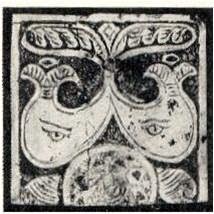




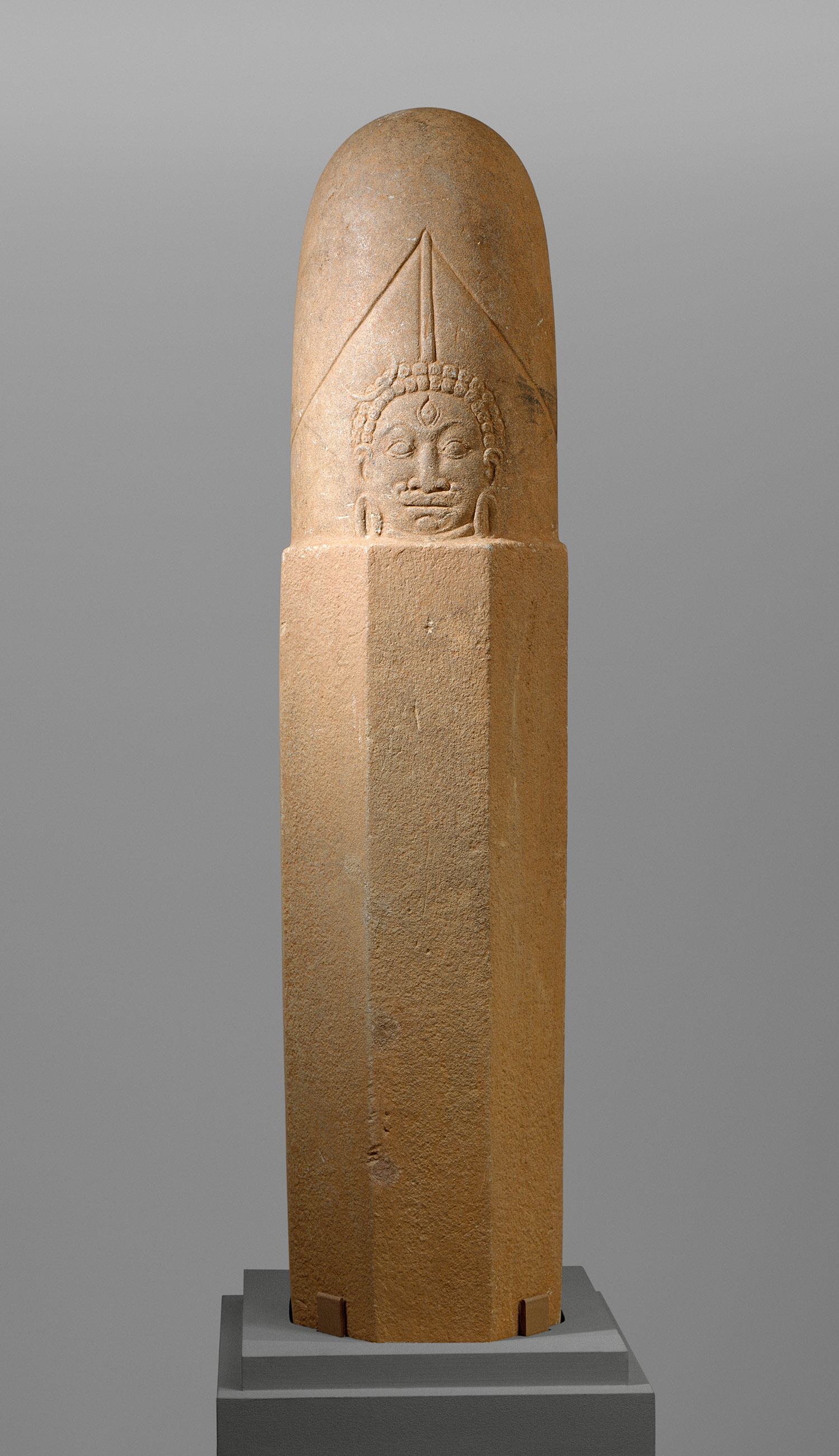





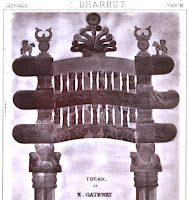



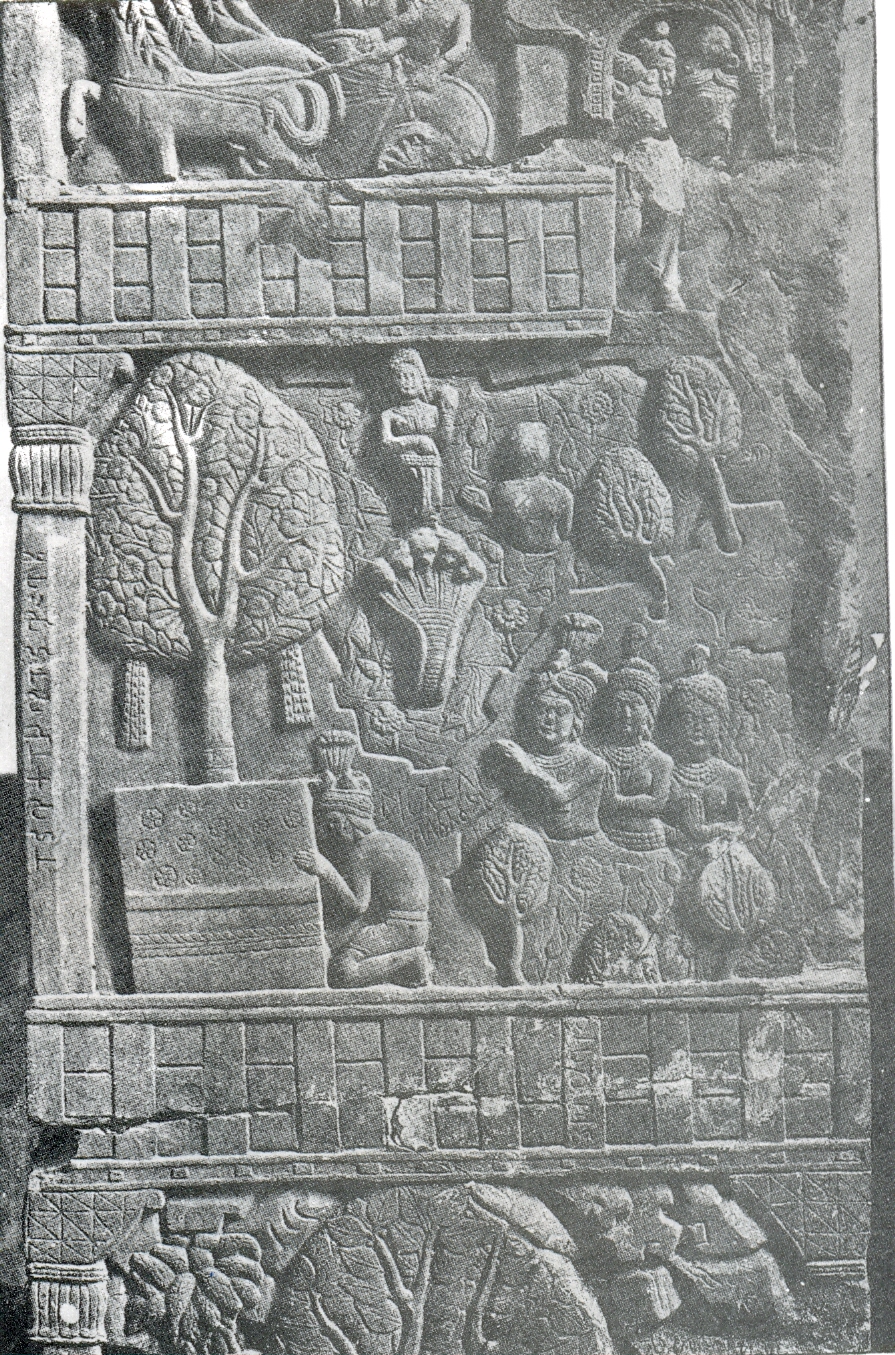

 Bharhut. Sculptural frieze venerating 'srivatsa'.
Bharhut. Sculptural frieze venerating 'srivatsa'.






 Bharhut stupa torana replicated on a Bharhut frieze. The centerpiece mollusc hypertext is flanked by two srivatsa hypertexts. The gateway entrance is adorned with a garland.
Bharhut stupa torana replicated on a Bharhut frieze. The centerpiece mollusc hypertext is flanked by two srivatsa hypertexts. The gateway entrance is adorned with a garland.

.jpg/300px-GreekKing(Drawing).jpg) The sword is inscribed with a srivatsa hypertext.
The sword is inscribed with a srivatsa hypertext.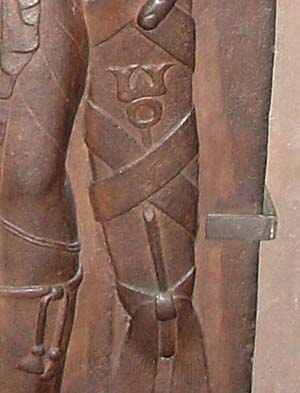 Srivatsa on a soldier's arm, together with a dotted circle
Srivatsa on a soldier's arm, together with a dotted circle Begram Ivory Plate 409. Srivatsa top a dotted circle.
Begram Ivory Plate 409. Srivatsa top a dotted circle. Pasenadi pillar
Pasenadi pillar



 Sp,e ,pmleus carru weogjts/ Medallion. Bharhut. kuThAru 'monkey' rebus: kuThAru 'armourer'.
Sp,e ,pmleus carru weogjts/ Medallion. Bharhut. kuThAru 'monkey' rebus: kuThAru 'armourer'.






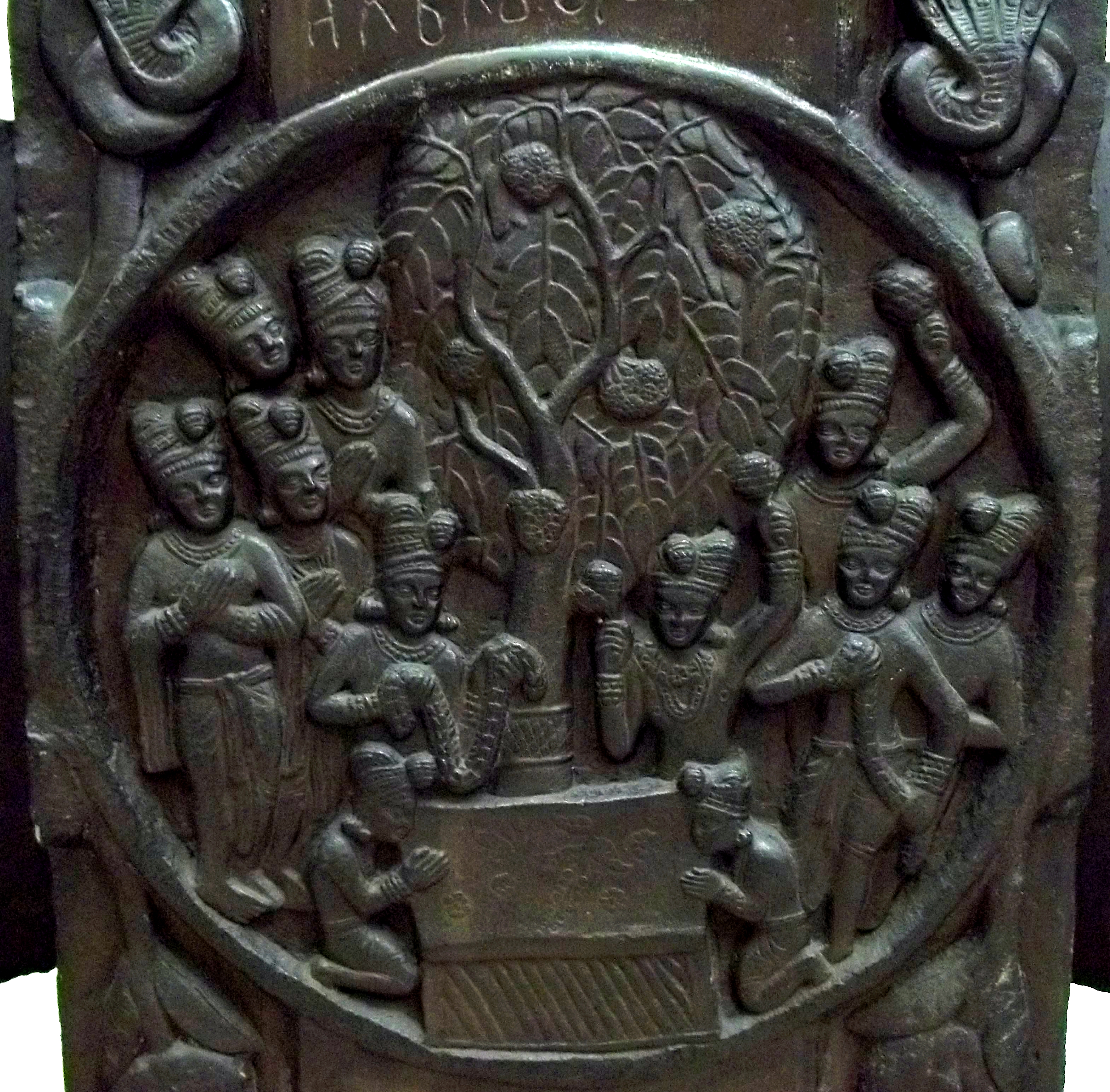
 kuTi 'tree' rebus: kuThi 'smelter'
kuTi 'tree' rebus: kuThi 'smelter' Ka.
Ka.
 Vamsee Juluri
Vamsee Juluri  Abhinav Prakash
Abhinav Prakash 
 Vishal Misra
Vishal Misra 
 Advaita Kala
Advaita Kala 






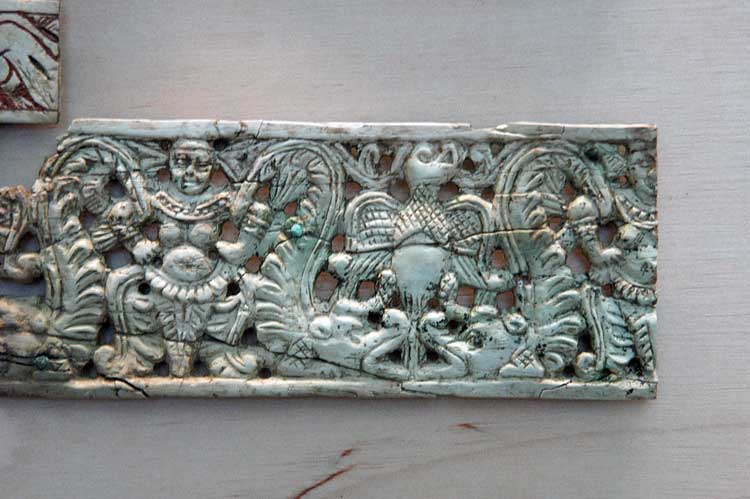


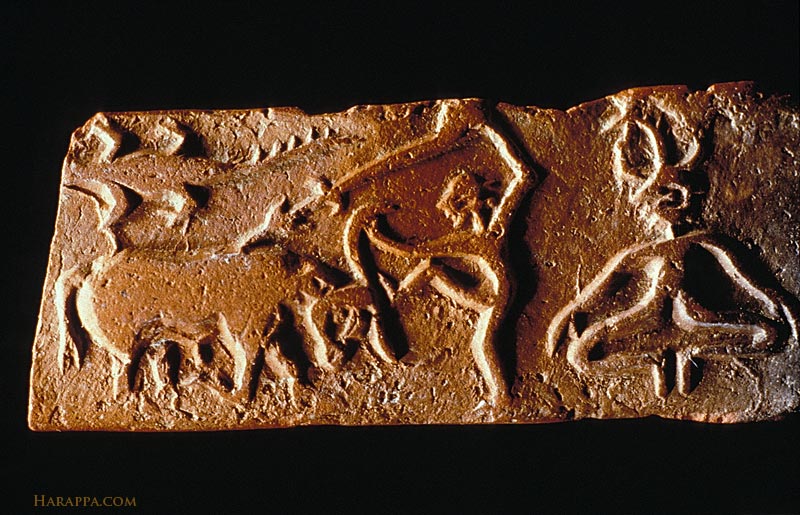















 Anser Indicus.
Anser Indicus.







 m305 seal. Mohenjo-daro
m305 seal. Mohenjo-daro 
![clip_image033[4]](http://kalyan97.files.wordpress.com/2007/06/clip-image0334-thumb.jpg?w=71&h=44)





 Kalibangan 32 aya 'fish' + kaNDa 'arrow' Rebus: ayaskANDa 'excellent quantity of iron' (Panini)
Kalibangan 32 aya 'fish' + kaNDa 'arrow' Rebus: ayaskANDa 'excellent quantity of iron' (Panini) m1118
m1118 


 m1429C
m1429C


















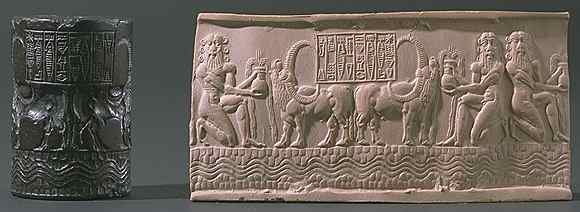

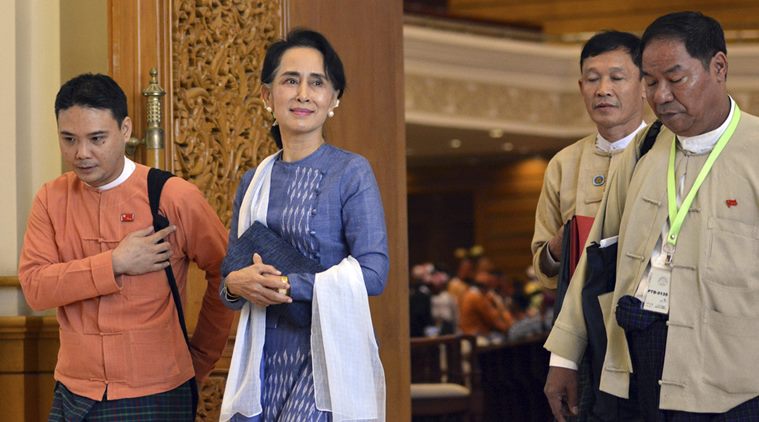 Aung San Suu Ky (Source: AP Photo) March 25, 2016
Aung San Suu Ky (Source: AP Photo) March 25, 2016
Writer